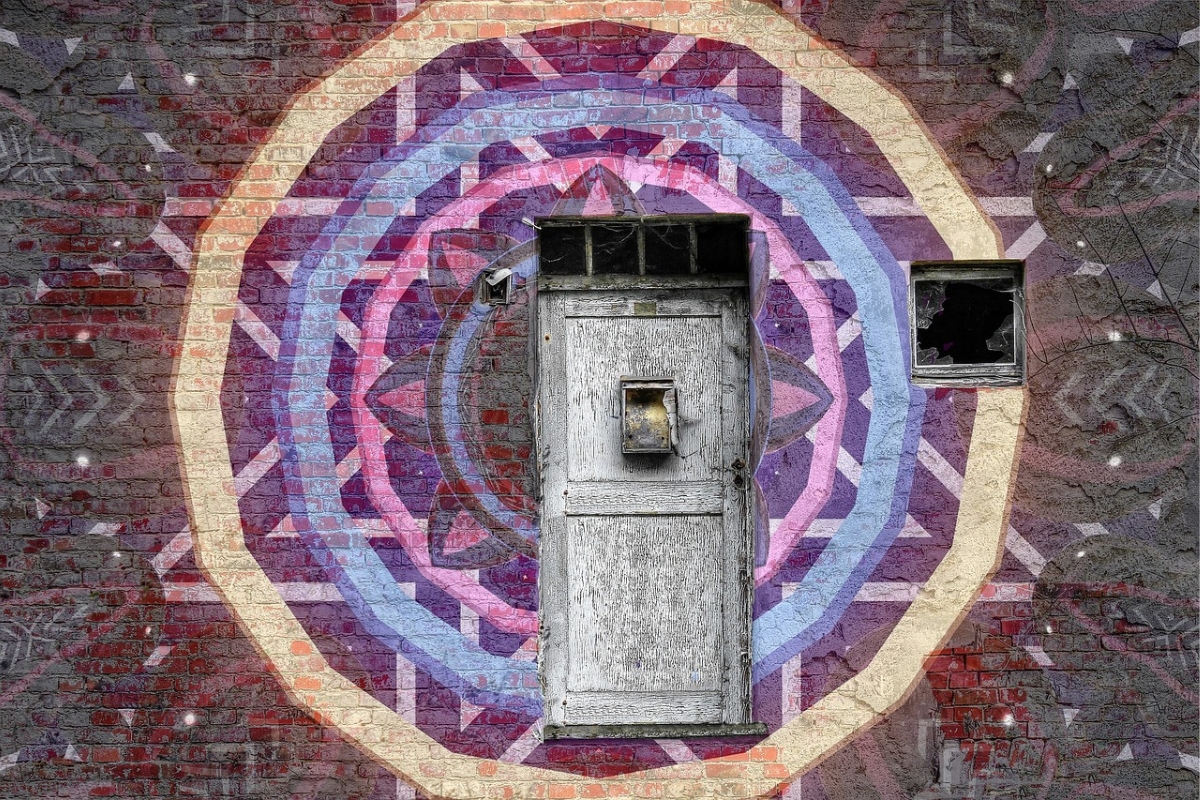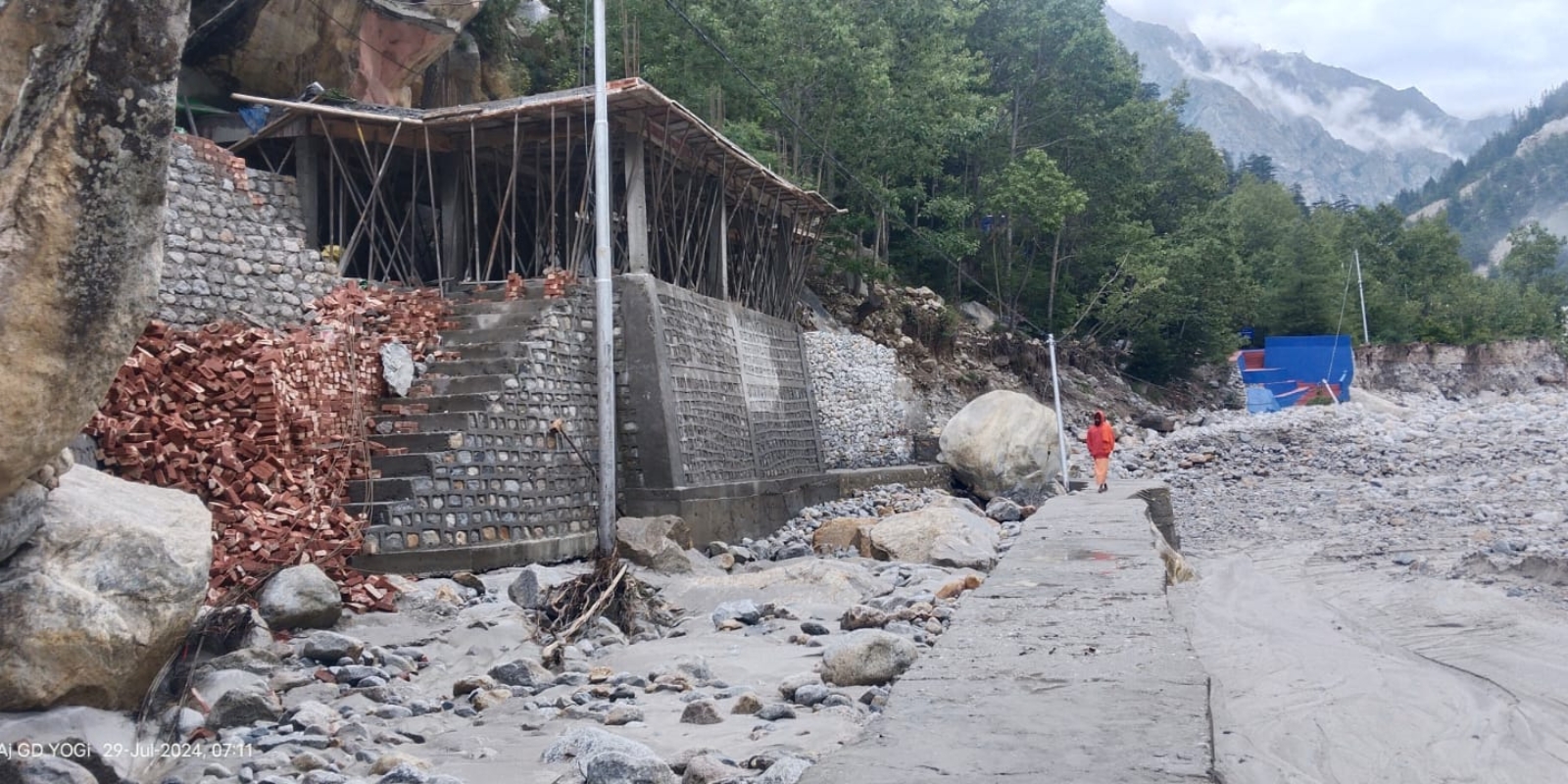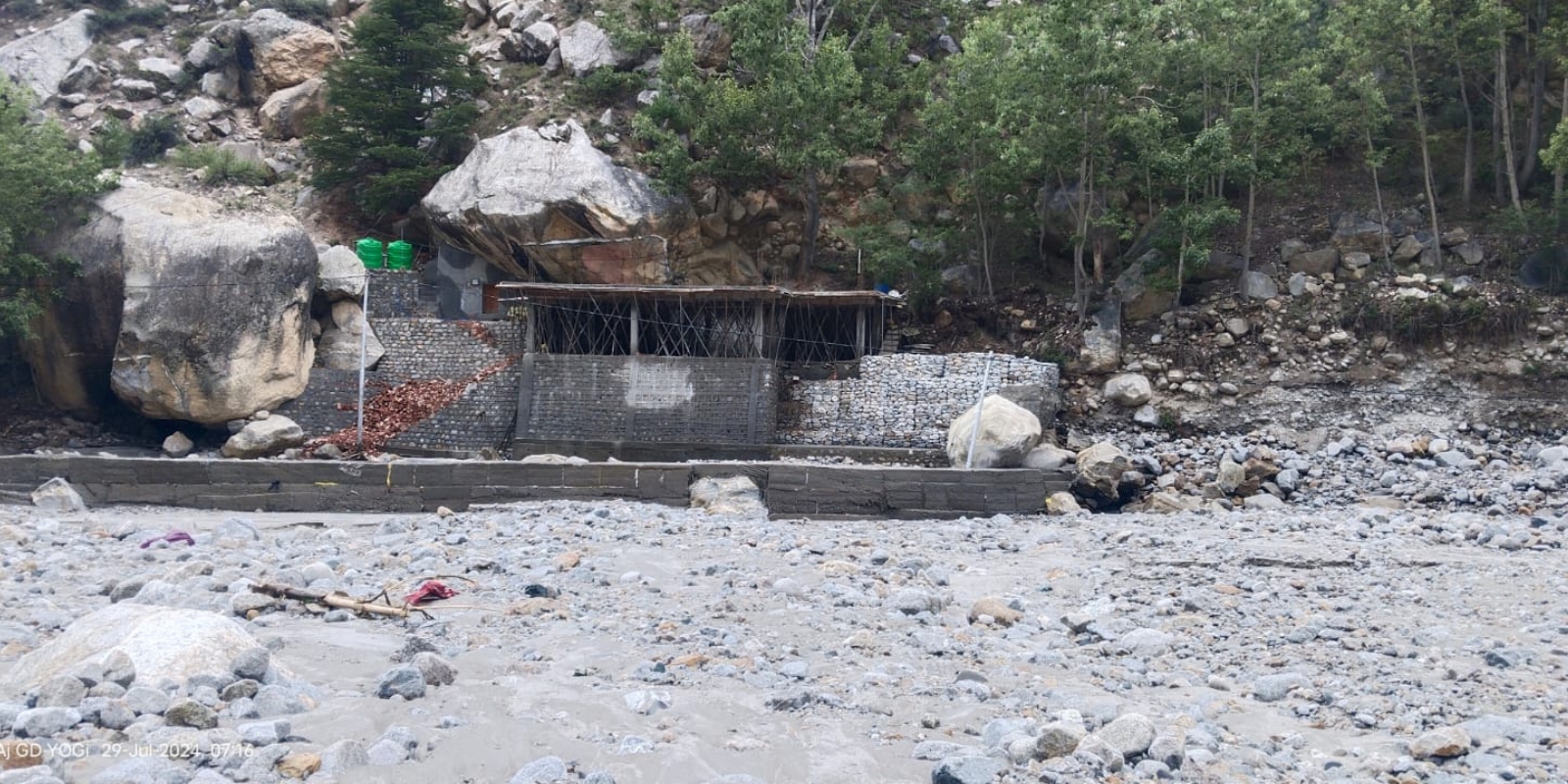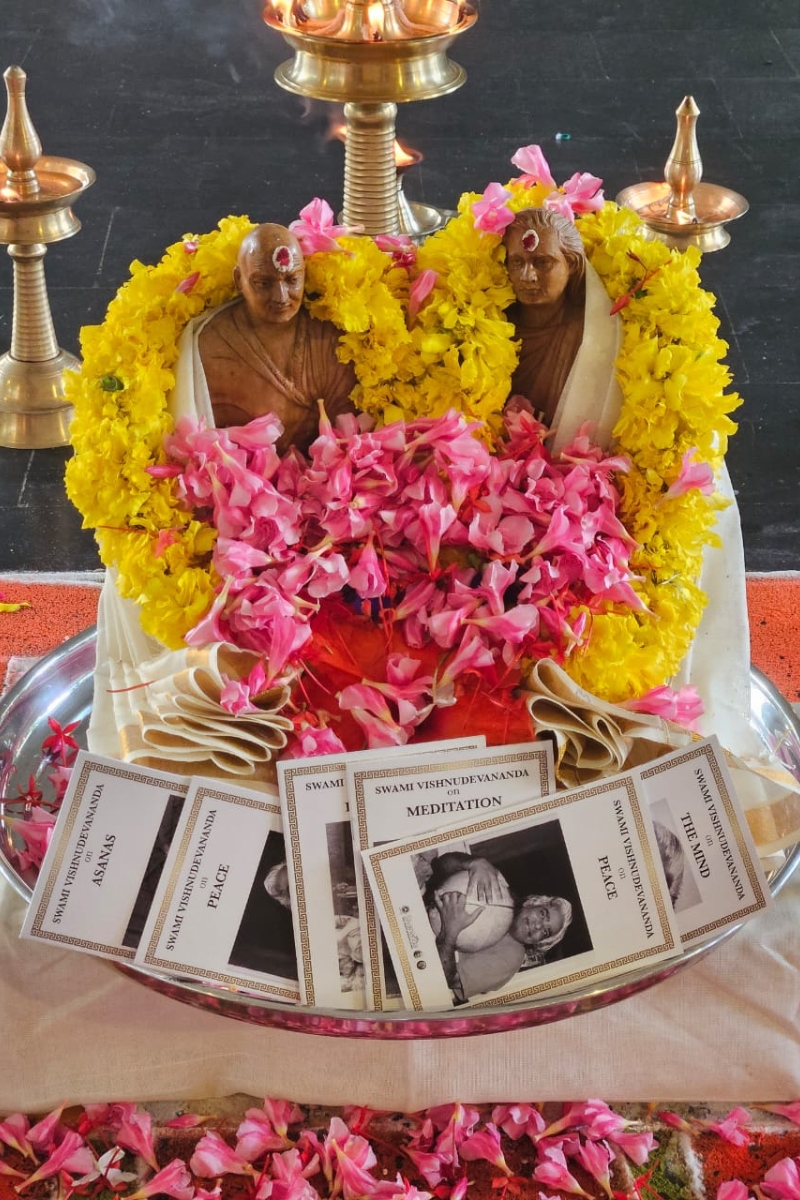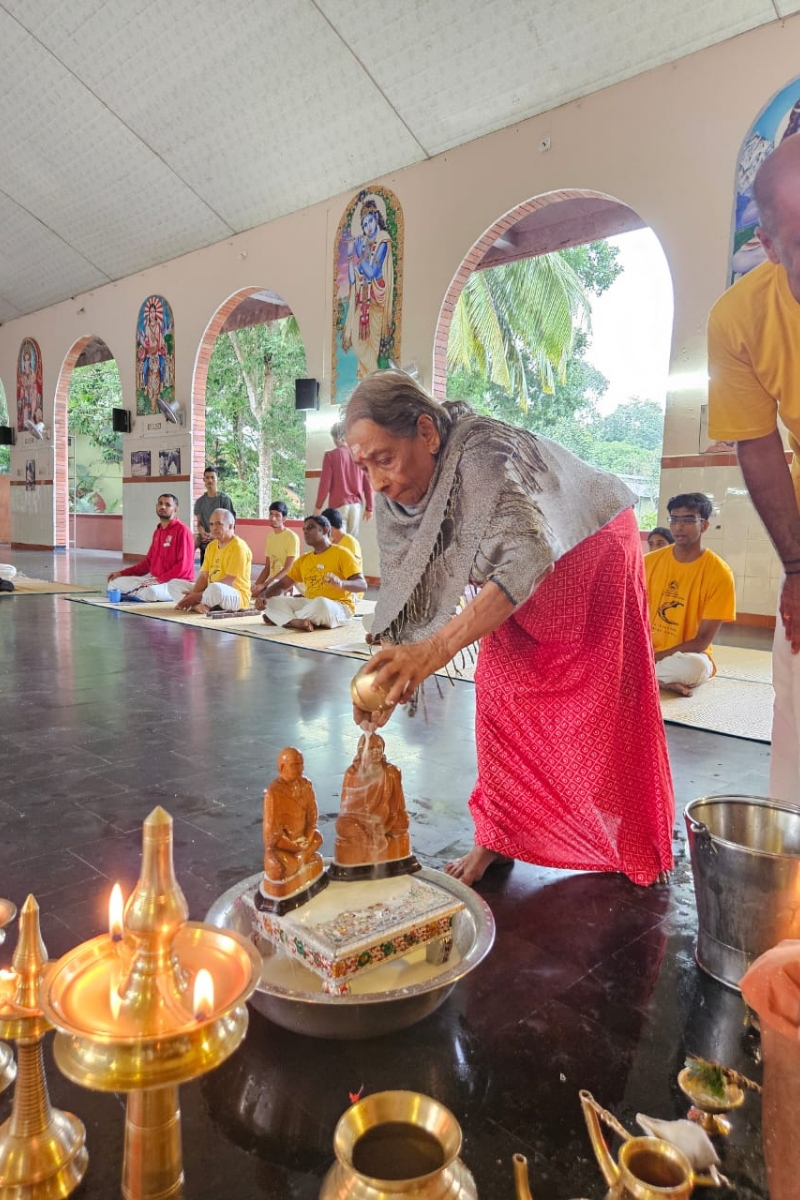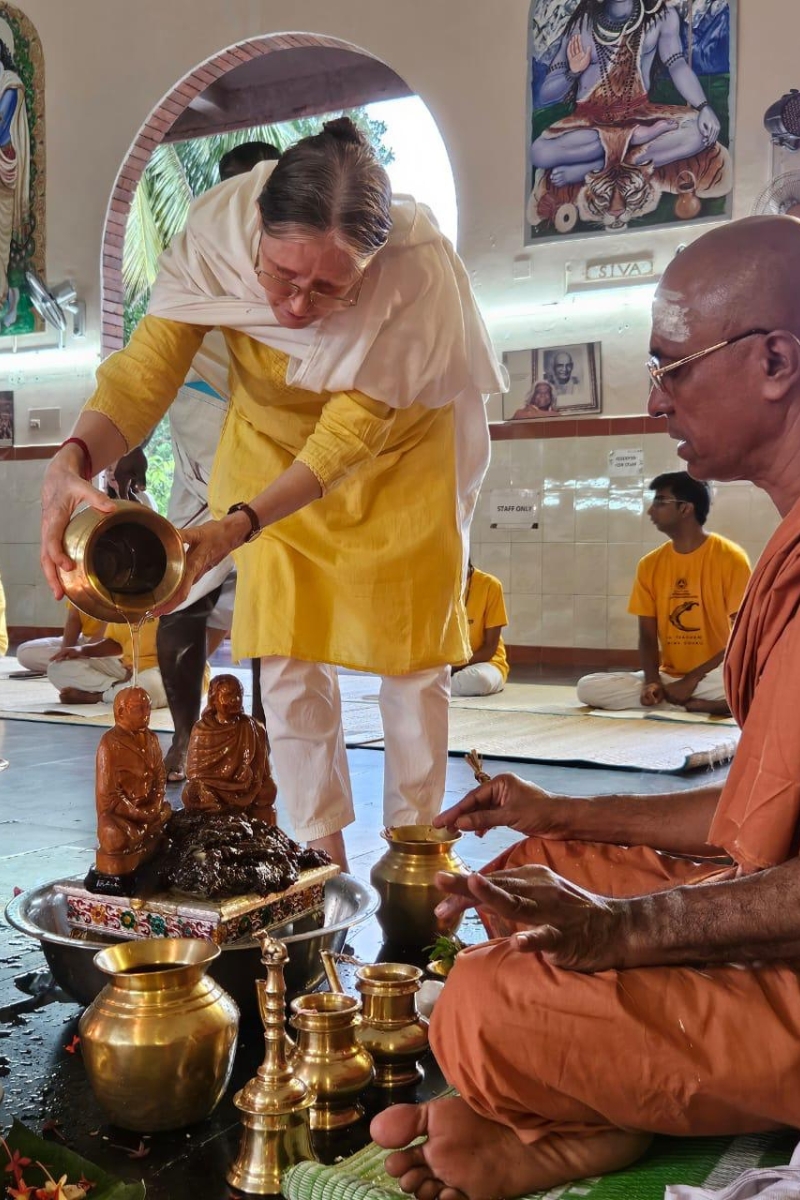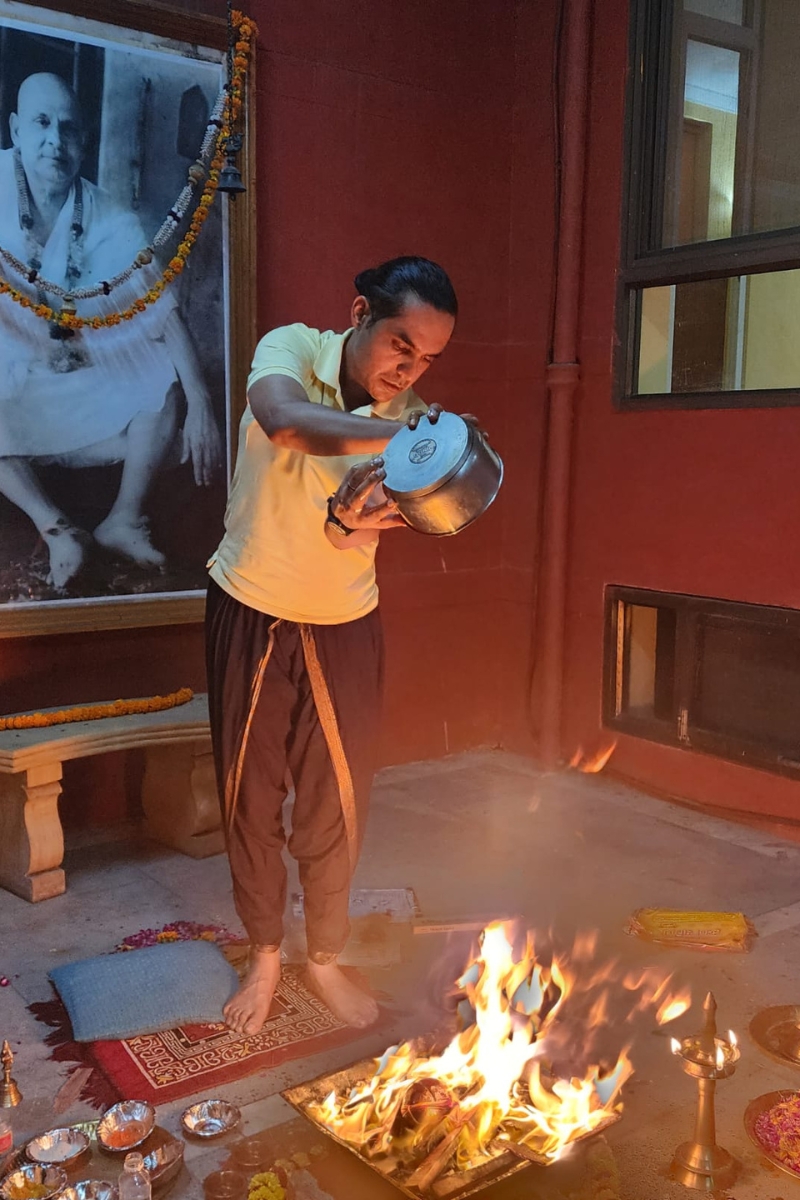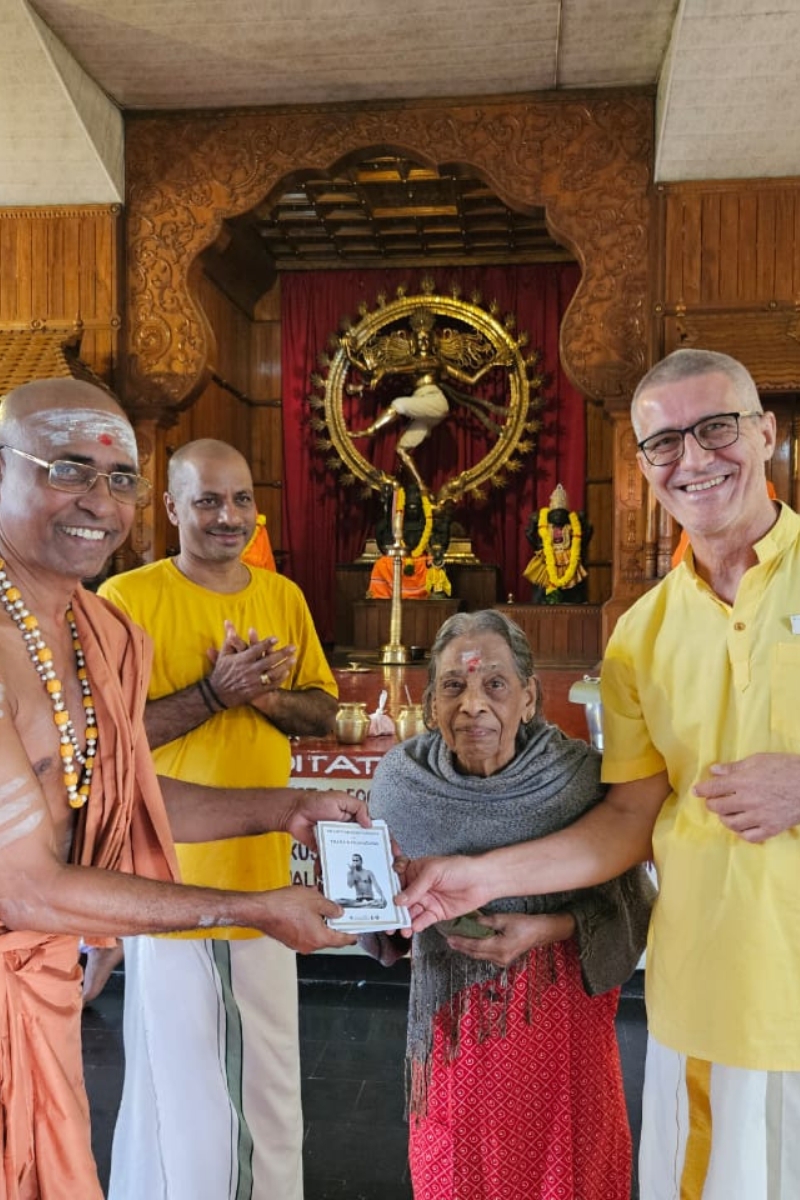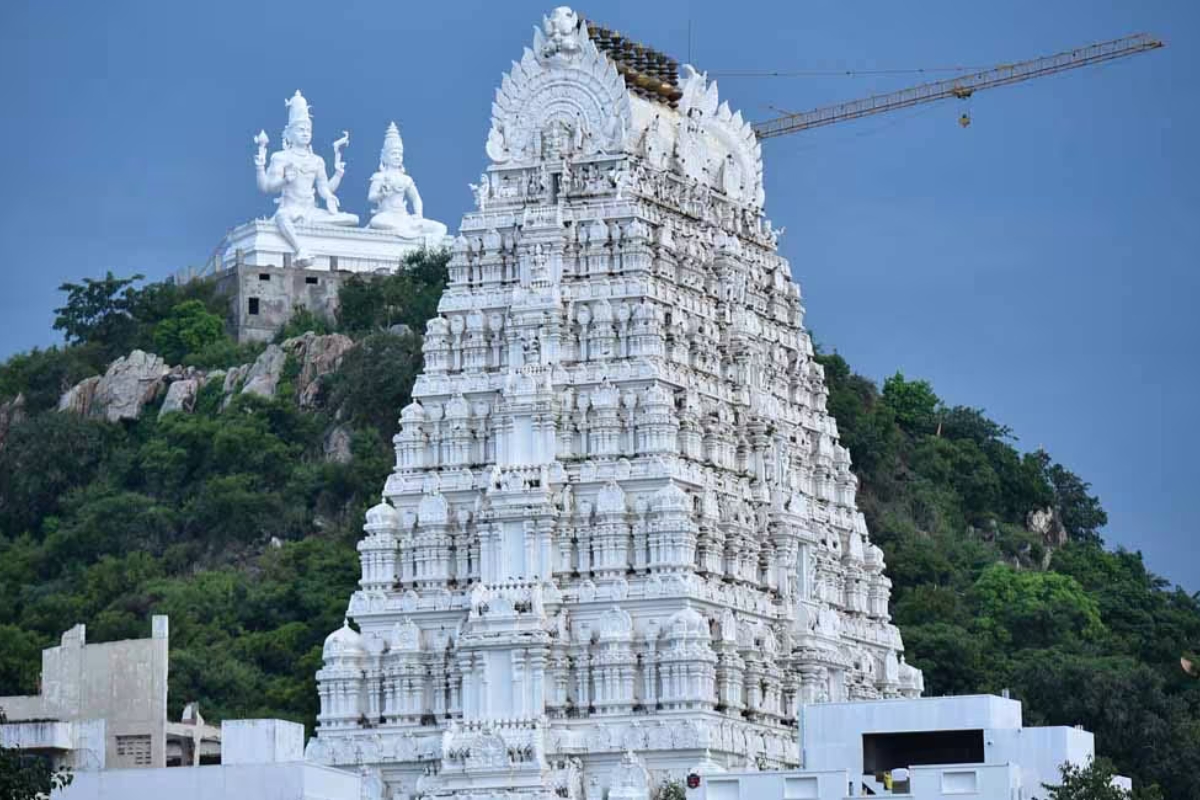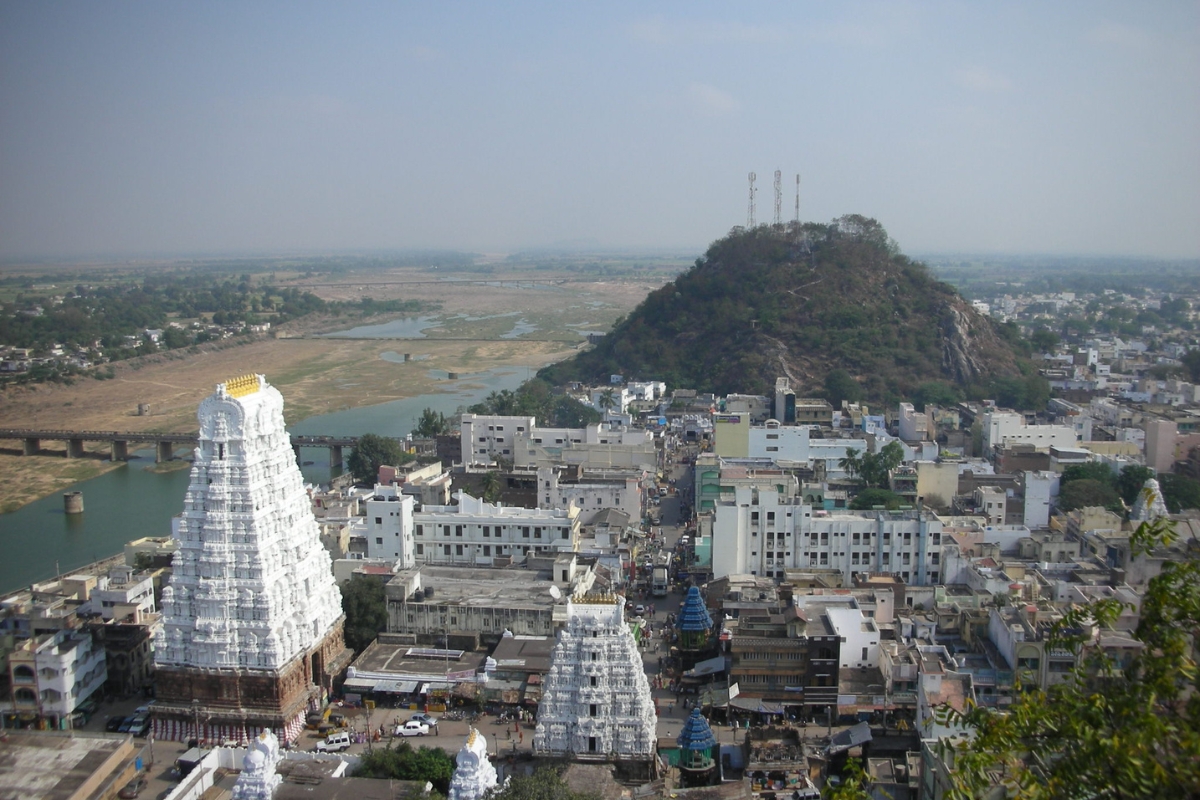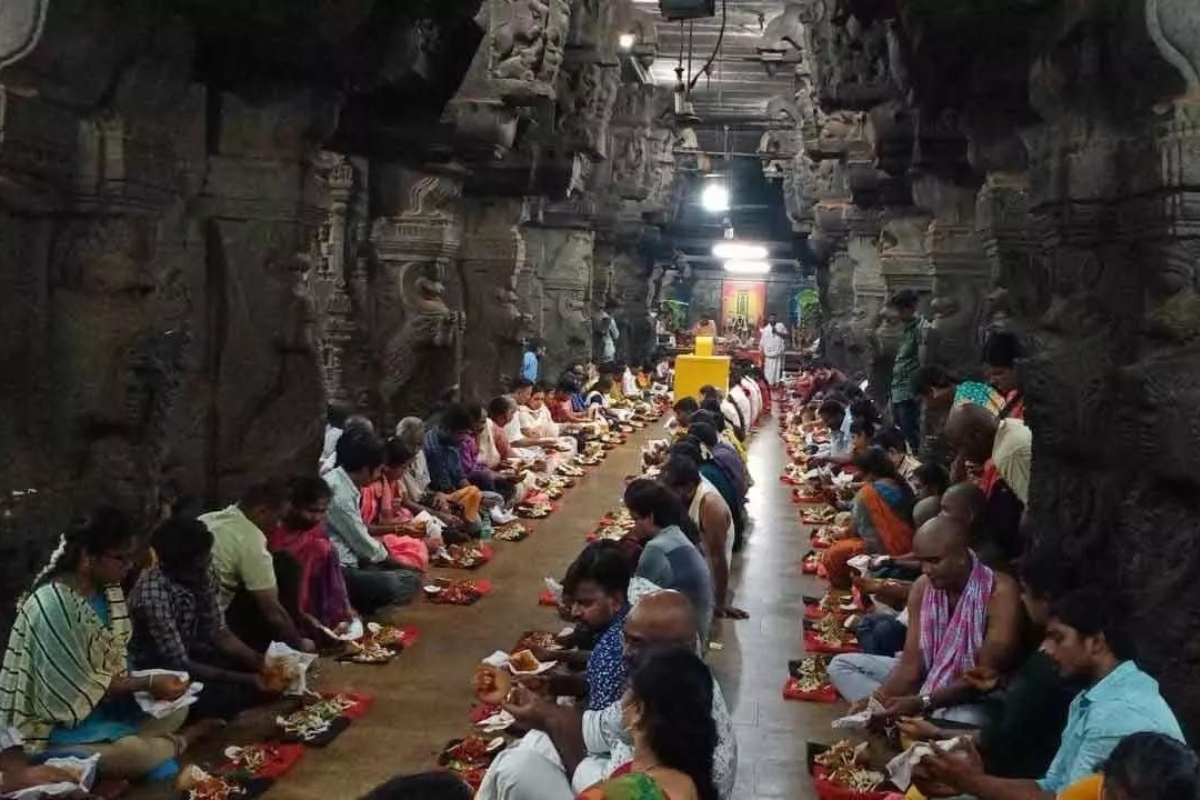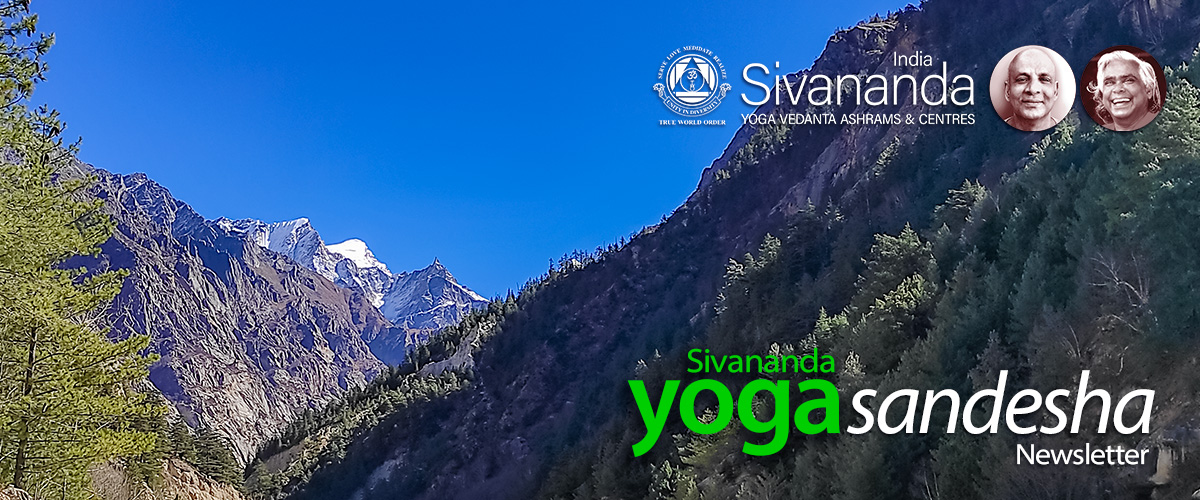
Om Namah Sivaya
Blessed Self,
The month of July has been quite inspirational for us, having celebrated Master Swami Sivanandaji’s Mahasamadhi and also Guru Poornima. Each of our ashrams and centres conducted events to connect with Master’s teachings and to obtain blessings for our further sadhana. We also took this opportunity to release a series of six small booklets on our Guru Swami Vishnudevanandaji’s teachings, prepared and published with dedication by Padmavati and Uma to share freely with all who are in need. You can download the booklets for yourself here: https://sivanandayoga.org/downloads/
By the grace of Master and Swamiji our South Indian ashrams are thriving with many serious seekers of yoga and meditation filling the Yoga Vacation and Ayurvedic. Our Netala Ashram is currently in its peak season with Teachers’ Training Courses and the ongoing Yoga Vacation program. Student numbers remain consistent and staff doing their duties with sincerity.
We are reminded to approach our own sadhana with sincerity and discipline and share that knowledge and experience with all who arrive eager and willing to discover the ancient teachings, as taught by Master and Swamiji. We thank all of you for your continued support.
May Master and Swamiji’s blessings be with you always.
Pranams,
Sivananda Yoga Vedanta Ashrams & Centres, India
Kundalini is one of the most misunderstood concepts within the practice of yoga. It inspires excitement, an unhealthy obsession in some, and vulnerability in others who readily believe that a teacher or healer may be able to affect or awaken their kundalini for them.
Kundalini, or Kundalini Shakti is a dormant spiritual potential present within each human. It represents our spiritual capacity, our ability to self-realise. It is not so different from the concept of prana, or vital energy, except that prana is considered to be always active, while Kundalini must be awakened through practice, purification, and preparation to rise through the sushumna nadi, the central energy channel, through the chakras and to unite with Siva at the crown of the head.
What we should understand about Kundalini is that we must be ready for it. We can strive to understand it, but should not (our Gurus advise), make any effort to awaken it. For some students this is confusing. Why would we study something so very exciting and interesting and then be told to leave it alone? In some ways kundalini is truth. Do we have the ability to recognise truth when we see it? To try to understand it? To admit that we don’t know everything? To sit with the discomfort of not yet knowing? This is what is asked of us.
Many students want quick answers and lack the patience to let understanding dawn through disciplined practice. In fact, we dislike the very word discipline. Discipline allows practice and understanding unfold together. And as many times as we say this, many students want quick answers. We may prefer to feel that we know everything already, than try to open the mind to how much is unknown.
In this issue of Yoga Sandesha we explore kundalini and hear the words of Master and Swamiji on the subject, including some of Swamiji’s unpublished writing on kundalini yoga. We’ll focus on the Vishuddha Chakra in Sarvangasana, the Shoulderstand, and visit the Srikalahasti Temple in Andhra Pradesh, where the Vishuddha Chakra plays a prominent role. We hope to provide some inspiration and understanding, as well as a dose of reality, a “bitter pill” on kundalini, as Swamiji said. Thank you for taking the time to read Sivananda Yoga Sandesha. We hope you enjoy the newsletter and take time to reflect on your practice. As usual, please feel free to reach out to us with your thoughts and feedback: [email protected]
News Update:
Sarada Cave in Gangotri Swept Away
It is with great sadness that we share the news that Swami Chidanandaji’s former place of sadhana in Gangotri, the Sarada Kutir ashram, has been washed away during recent flash floods. We pray for the safety of all in Gangotri at present and that everyone has survived. This video was shot by one of the Brahmacharis there, showing the ashram being washed away in just a few seconds into the Ganga.
Sarada Kutir had two caves and several rooms where Sadhakas would often stay. It was a nice building with the cave integrated within it. Recently, our students have been visiting there monthly for tea and breakfast or lunch during their visit to Swamiji’s cave in Gangotri. The Brahmacharis from Sarada Kutir have been helping us to restore our Swamiji’s Sivananda Guha, and much of the construction has been supervised by them.
Photo Update:
Swamiji’s Cave in Gangotri After the Flood
It appears as if Sivananda Guha, Swami Vishnudevananda’s cave nearby, is ok. It is currently being rebuilt with a new concrete roof recently poured. 5000 loose bricks were lost to the flood waters. These photos were sent to us today, showing the current state of the cave.
Photo Update:
Guru Purnima Celebrated in India
Here are a few photos of Guru Purnima poojas conducted on July 21 in the Neyyar Dam Ashram and the Dwarka Centre, as well as the launch of the new booklets for distribution.
Upcoming Courses:
Learn, Practise & Grow with Us!
Teachers’ Training Course (TTC)
- Aug 18 to Sep 14, 2024,
Gudur, Andhra Pradesh - Sept 15 to Oct 12, 2024,
Uttarkashi, Himalayas - Oct 6 to Nov 3, 2024,
Chiang Rai,Thailand
For more details, click here
Panchakarma Detoxification Programme (PDP)
- July 16 to July 30, 2024,
Neyyar Dam, Kerala - Aug 1 to Aug 15, 2024,
Neyyar Dam, Kerala
For more details, click here
Advanced Teachers’ Training Course (ATTC)
- Jan 26 to Feb 22, 2025,
Madurai, Tamil Nadu
For more details, click here
Sadhana Intensive (SI)
- Oct 16 to 29, 2024,
Uttarkashi, Himalayas
For more details, click here
Links/Research: Kundalini Awakening on the Mind
Explore a study on the impact of kundalini awakening on the human mind and psychology here: https://ijassonline.in/AbstractView.aspx?PID=2017-5-2-12
Spiritual Calendar
August 4 – New Moon
August 16 – Ekadasi
August 19 – Full Moon
August 26 – Sri Krishna Jayanti
August 29 – Ekadasi
Teachings Excerpt:
Swami Sivananda on Kundalini from “Health and Hatha Yoga”
There are two main lines of yoga—dhyana (where meditation is the main discipline) and kundalini yoga—and there is a marked difference between the two. The first class of yoga is that in which samadhi is obtained by intellectual processes of meditation and the like, possibly with the aid of auxiliary processes of mantra, hatha yoga (other than the rousing of kundalini) and by detachment from the world; the second stands apart as that portion of hatha yoga in which, though intellectual processes are not neglected, the creative and sustaining shakti of the whole body is actually united with the Supreme Consciousness.The two forms of yoga differ in method and result.
Kundalini is so renowned that many seek to know Her. Having studied the theory of this yoga, one may ask: “Can one get on without it?” The answer is: “It depends upon what you are looking for.” If you want to rouse kundalini shakti, to enjoy the bliss of union of Siva and shakti through Her, and to gain the accompanying powers (siddhis), it is obvious that this end can be achieved only by kundalini yoga. In that case there are some risks incurred. But if liberation is sought without desire for union through kundalini, then such yoga is not necessary; for liberation may be obtained by pure dhyana. Both are realisation; but whilst liberation is attainable by either method, there are other marked differences between the two. A dhyana yogi should not neglect his body, knowing that as he is both mind and matter, each reacts one upon the other. Neglect or mere mortification of the body is more apt to produce disordered imagination than a true spiritual experience. He is not concerned, however, with the body in the sense that the hatha yogi is. It is possible to be a successful dhyana yogi and yet to be weak in body, sick and short-lived.
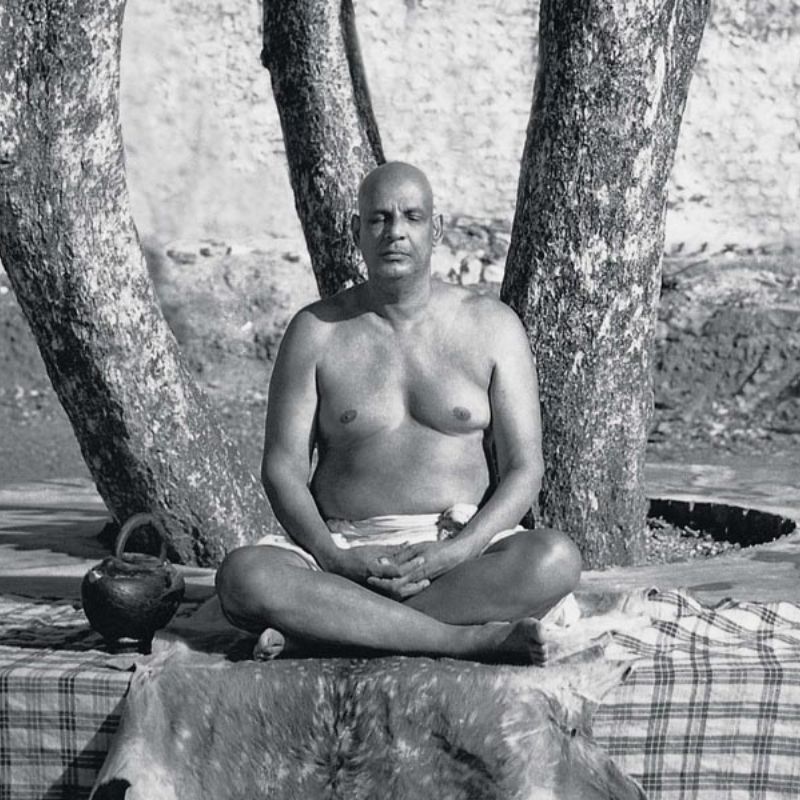
Hatha yoga builds up its philosophy around kundalini, and the methods adopted are different from tantrik sadhana to which kundalini yoga actually belongs. Hatha yoga seeks to awaken kundalini through the discipline of the physical body, purification of nads and controlling the prana. Through the asanas it tones up the entire nervous system and brings it under the conscious control of the yogi; through bandhas and mudras it controls the prana, regulates its movements and even blocks and seals it without allowing it to move; through kriyas it purifies the inner organs of the physical body; and, finally, through pranayama it brings the mind itself under the control of the yogi. The kundalini is made to go upwards to the sahasrara through these combined methods.
Before one studies kundalini yoga a knowledge of the nadis (ida, pingala and sushumna), chakras and kundalini is necessary.
What is Kundalini?
Kundalini shakti is the source for all occult powers. It is the coiled-up sleeping diving shakti that lies dormant in all beings. This mysterious kundalini lies face downwards at the mouth of the sushumna nadi. It has three and a half coils like a serpent. When it is awakened it makes a hissing sound like that of a serpent beaten with a stick, and proceeds to the other chakras through the brahma nadi (which is also called the chitra nadi) within sushumna. Hence kundalini is also called bhujangini or serpent power. The three coils represent the three gunas of prakriti—sattva, rajas and tamas—and the half represents the vikriti, the modification of prakriti.
If you are pure and free from all desires, kundalini will awaken by itself.
Teachings Excerpt:
Swami Vishnudevananda’s Unpublished Writing on Kundalini
Kundalini, you cannot teach. The awakening of the kundalini comes when you practice all of these things properly. As when you eat food, you grow your muscles, when you fast you become lean. So if you want to awaken the kundalini, you must practice yama and niyama first, asana and pranayama, that’s the purpose of all those things. The kundalini will awaken. Just talking about the kundalini will not awaken it.
Most people cannot practice kundalini yoga, they are not ready for it. To practice kundalini yoga you must practice brahmacharya, satyam, ahimsa, so many things. Even people who try to practice those things, they fail. Only God’s grace can bring this energy up. Nobody can do it. You can explain the theory and tell people that the purpose of what we teach is to bring the energy up, but you cannot tell them that you are going to teach them kundalini yoga. Explain he theory behind it, but don’t say you are going to teach kundalini yoga. People who claim to teach kundalini yoga are just a lot of humbug.
Master himself would never teach this. Maybe he would mention it in a sentence or two. He even wrote a book called “Kundalini Yoga” but if you look into it you will see that it is all hatha yoga and all other yogas together.
So do not go out and do this—it is just a gimmick to attract people. Gimmicks won’t last. It is only temporary that you can draw people by giving them this kundalini yoga, super advanced pranayama, etc. Master never gave gimmicks. He only taught, “Serve, love, give, purify, meditate, realise.” Then the kundalini will awaken automatically.
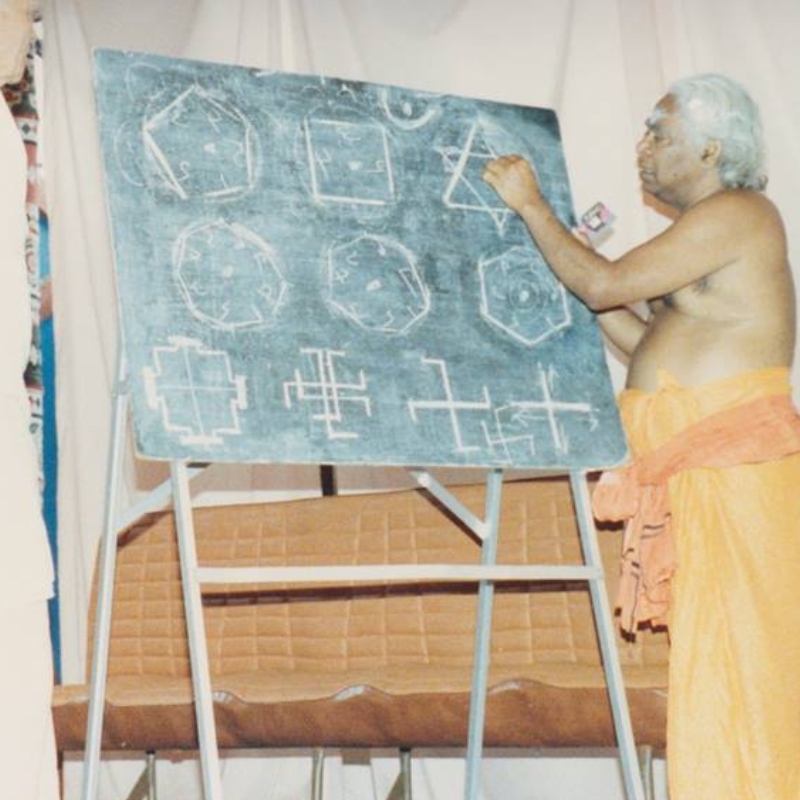
Who has got the power to awaken the great power Shakti? And if it awakens, who has got the power to hold Her? It is just like holding a 10 million volt current in your hand. People don’t understand that subject. That is all the fruit: kundalini, samadhi, it’s all the same, one and the same. In raja yoga, asamprajnata samadhi, these are just words, but the effect is the same. If you drink the water it will quench your thirst. No matter where you drink, which way you drink, whether the wate is poured into the mouth or sipped through a straw, it doesn’t matter. It is the water which will quench your thirst. Quenching the thirst is the end result. You can’t just say, “I am going to teach you to quench your thirst.” If you want to quench your thirst, just drink water. If you don’t drink the water, no amount of talking will quench your thirst.
Often, teaching courses like advanced pranayama is for the benefit of your own ego, not for the advancement of the students. It is like giving pizza to a newborn baby because you love pizza.
You must understand, there is no purpose in just giving technique. As the baby develops, you give it food to suit its development. So too, as the students progress you give them what they need. Students come with varying degrees of ill health, mental health, ethical and moral weaknesses, spiritual weaknesses, lack of discipline. They have been smoking, drinking, taking drugs, etc. If you give advanced pranayama to these people, how will it help them. Rather, it will destroy them.
You must understand the theory behind it. If you don’t understand why you are giving it, how to give it, and when to give it, you can do more harm than good.
So read Master’s books on kundalini yoga and pranayama. Read the “Complete Illustrated Book of Yoga”, “Meditation and Mantras”, and my commentaries of the Hatha Yoga Pradipika. They will help you to understand that to do all these things a person must be completely dedicated—and not just in this lifetime alone. You must have dedication from several past lives to practice that intense pranayama. Otherwise, it will make you crazy.
So learn that the purpose of the teaching is not just to attract people’s attention. It is to make them aware. And slowly, as they practice, they will come to understand the truth of what is behind it, what is the purpose of this pranayama. At present, they think it is some sort of gymnastics of physical exercise. Even you think that. But, it is not just physical energy or physical exercise. It is your subliminal energy that is within. And that cannot be awakened improperly. Just as the water coming down from a mountain into a river must be channelled properly before you make a dam, you must know how to channel the water and which direction to channel it into. Recently, there was a case in Punjab where this was not done properly, nothing could stop the water and whole villages were wiped-out.
So too with the Kundalini Shakti. Merely awakening the energy without ethics and morals, people are doomed. It is not going to help anybody. That is why Gurudev and other great masters won’t talk about this.
I can’t just go on like this; it is really heartbreaking. I don’t want you all to do that. I don’t want you to just teach gimmicks. If people want to learn, prepare them properly. Teach them ethics and morals. Slowly give them asanas and pranayama. Don’t worry, the Kundalini will awaken by itself.
See, Master is a tricky man, but in a positive way. He gives you different kinds of cake, but inside is the bitter pill. The bitter pill is discipline, that is all there is to it. Whatever you do, wherever you go, you must have discipline. But suppose each person’s discipline were the same. For example, I am having intense discipline of silence 24 hours a day, but suppose you had to do that. You would go crazy in just one week. The same thing is true for spiritual practice. Do not just overload anything. The main thing is practice. This you must understand. You cannot just start to do intense practice.
For example, I did intense hatha yoga practice. Master never taught me. He just said for me to go and practice. The rest was in my hands. The practice, which I did in past incarnations, I continued very intensely in this lifetime. I never initiated anyone into Kundalini Yoga. I never even talk about it! It is the most horrible thing to talk about.
Practice and Teaching Tips:
Sarvangasana & the Vishuddha Chakra
Sarvangasana, the Shoulderstand, is a deeply introspective asana. It offers an invitation to focus energetically at the Vishuddha Chakra at the base of the throat and to examine issues of voice, speech, communication, listening, and self-expression. In fact, we can also examine the element of space, both within the body and mind, and in relation to the Vishuddha Chakra, observing both the physical space at the throat, and the space behind where the chest and the chin meet.
Although Sarvangasana is usually the first asana that we teach to beginners, some people do have difficulty getting into it unassisted. Others may take time before they’re able to breathe comfortably here. In order to spend time and to focus at a subtle level we need to feel comfortable. We share some tips in this video, both practical and subtle, for coming into Sarvangasana independently and also for two different ways to focus at the Vishuddha Chakra and to do some of the important introspective work that is possible.
We hope that some of these tips help. All best wishes for your inspired practice.
Temple Showcase:
Srikalahasti Temple in Andhra Pradesh & the Vishuddha Chakra
Srikalahasthi temple is one of the most revered Siva temples in South India. It is said to be the site where Kannappa (a legendary figure in Tamil folklore, known for his devotion to Lord Siva) was ready to offer both his own eyes to replace those of the Siva linga which were oozing blood and tears. Lord Siva stopped Kannappa, recognising that he was pure of heart, and granted him moksha (liberation).
The inner temple was constructed around the 5th century and the outer temple was constructed in the 11th century by the Rajendra Chola I, one of the most daring Kings in Indian history. Here, Siva in his aspect as vayu (air) is worshiped as Kalahasteeswara. Sri Kalahasti Temple is considered one of the Pancha Bhoota Sthalams, five temples dedicated to Lord Siva, each of the five enshrined Siva lingams representing a manifestation of the five prime elements of nature: earth, water, fire, air, and ether. Pancha indicates “five,” Bhuta means “elements,” and Sthala means “place.” Srikalahasti’s unique feature is its Vayu Linga, where Lord Shiva is worshipped as the embodiment of air. At the right side of the linga there is an Akanda Jyothi, a lamp which is forever lit which moves constantly and signifies the presence of the breath of Lord Siva. The other four sthalam/divine locations are Chidambaram depicting space, Kanchipuram depicting Earth, Tiruvanaikkaval depicting water and Tiruvannamalai depicting Fire. Devotees believe that a visit to this temple can help in alleviating negative astrological effects related to Rahu and Ketu (lunar nodes). A famous Rahu Ketu Pooja is performed in the temple to eliminate these harmful effects.
According to one legend, the Sivalingam at Kalahasti was worshipped by three devotees: Sri (spider), Kala (snake), and Hasti (Elephant) each following a different mode of worship. There was the inevitable conflict which Siva resolved by granting salvation to all the three.
It is believed that Srikalahasti is a temple which energises the vishuddha chakra at the throat. As such, it functions as a gateway for the great liberation. Once our energy rises to the level of the vishuddha chakra, the pathway for mukti, or salvation is laid and there is no turning back. Srikalahasti Temple is a popular Sakta Vishuddhi Ksetram, or temple where the Kundalini Shakti is brought to the Vishuddha Chakra.
Srikalahasti Temple is about 1.5 hours from our Gudur Ashram in Andhra Pradesh. Day trips are often undertaken to visit the temple. The Temple is at Kalahasti, which is also close to the famous Sri Venkateswara Swami Temple in Tirupati. The temple is dedicated to Venkateswara, a form of Vishnu, who is believed to have appeared on the earth to save mankind from trials and troubles of Kali Yuga.
“Before awakening the kundalini, you must have purity of body, purification of nadis, purity of mind, and purity of intellect.” -Swami Sivananda

